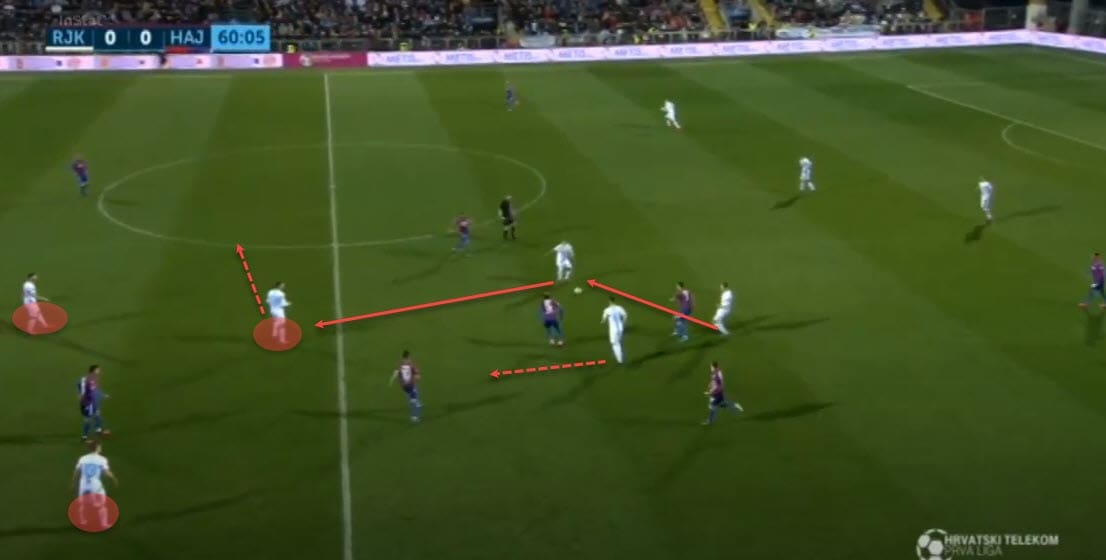What is rest defence?
Rest defence is a tactical term we use to describe the attacking team’s structure that ensures a good transition into counter-pressing and defending upon losing possession of the ball.
If a team’s rest defence structure is good, it means it lends itself nicely to immediately put the opposition under pressure as soon as they recover possession.
So when talking about someone’s rest defence, we actually talk about their (in)ability to attack efficiently and yet, have a structure in place for the moment the ball is taken away from them.
For that reason, rest defence tactics are essential in preventing counterattacks and fast transitions by keeping a solid defensive foundation behind the attacking force of the team.
Of course, executing it is a very difficult thing to accomplish because it requires optimal spacing and space occupation so that the players who are involved in the rest defence structure can react accordingly when called upon.
Some other tactical terms we relate to rest defence are structure, compactness, movement, counterattack, counterpressing, pressing and transitions.
Examples of rest defence in football
Rest defence tactics usually involve a couple of players that will stay behind the attacking line and snuff out all and any attempts at counterattacking and transitional play.
Usually, we will see midfielders positioned deeper and just ahead of the defensive line if they are deployed in that role.
In a 4-2-3-1 system or any system that uses the double pivot, for example, usually it would fall on the two midfielders’ shoulders to create the team’s rest defence.
Sometimes, as is the case with some of the big and successful teams like Liverpool, their rest defence may mirror the way they press and counterpress.
With the full-back usually positioned higher on the left side of the pitch, Jürgen Klopp will instruct two of his functional midfielders to stay behind the ball as his rest defence.
That way, they can immediately start the counterpress and move into the defensive phase of play as soon as the ball is lost inside the final third of the pitch.
Needless to stay, optimal compactness is also key in this regard as it ensures both the pressing and the rest defence tactics can be executed properly.
Why use rest defence?
Having a good rest defence is crucial when talking about any kind of functional attacking structure.
Every attack brings a dose of risk but with an effective rest defence in place, the team in question can minimise it and ensure they have a system ready to prevent transitions and counterattacks.
In other words, rest defence gives solidity to both the attacking and the defensive phases of play.

